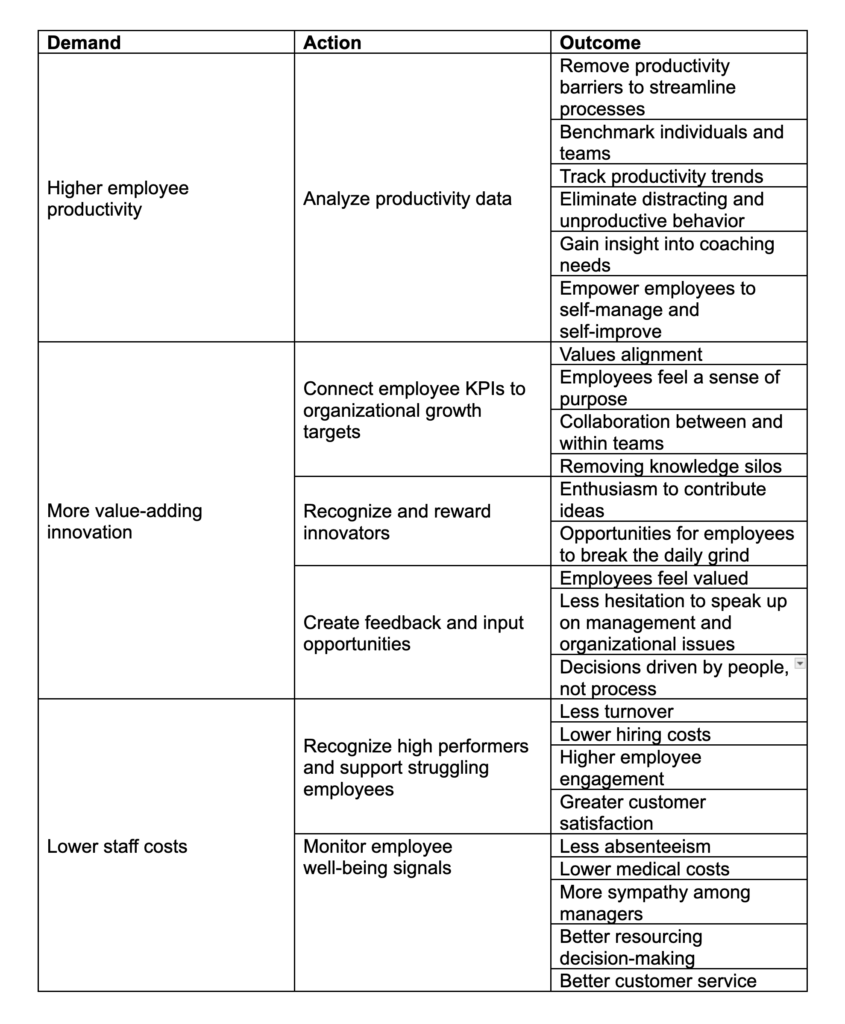In the ever-evolving landscape of Human Resources (HR) and people management, 2024 promises a pivotal year marked by the redefinition of culture, connection, and the future of work. As organizations navigate the complexities of a post-pandemic era, HR professionals emerge as architects and builders of the path forward. This blog series delves into HR’s top priorities for the coming year, dissecting the challenges, opportunities, and strategies that will shape the workplace of tomorrow.
Targeted action on DEI
Diversity, equity and inclusion (DEI) efforts need to go well beyond compliance with anti-discrimination laws. People and Culture leaders must build a system that includes, empowers and respects all individuals. It needs to be authentic. And it needs to happen now.
In 2022, big companies including Meta, Amazon, Twitter (as it was), Lyft and Stripe shrank their head count by double-digit percentages. The layoffs disproportionately affected People and Culture teams, particularly those working with diversity and inclusion.
Revelio Labs, The Washington Post and Reuters analyzed 2 years of layoff data from 600 companies. They found that not only were DEI roles more likely to be cut, but the attrition rate is accelerating.
Not surprisingly, bad things happen to employee engagement and satisfaction when a business turns its back on DEI.
- 44% of employees agree colleagues feel alienated by their organization’s DEI efforts
- 42% feel their organizations’ DEI efforts are divisive
“Companies with DEI teams tend to have more diverse new hires, and higher employee satisfaction.” – Revelio Labs

Don’t let your people down by dropping the ball on DEI
An overwhelming 80% of employees expect their CEO to take a public stand against discrimination, according to the 2023 Edelman Trust Barometer. Discrimination is the third-most expected priority behind employee treatment and climate change, ahead of the wealth gap and immigration issues.
As an advisor to the C-suite on all things, well, people and culture, you are both the architect and builder of a system for advancing DEI in your organization. In 2024, People and Culture leaders will reinvent their DEI policies, push back against resistance, and give employees opportunities to contribute to a culture that values every individual.
Framework for systemic DEI
Even with the best intentions, ad-hoc DEI activities come across as inauthentic. In 2024, People and Culture leaders will be working to systematize DEI by building on an unquestionable foundation of authenticity.
Equitable practices
- Pay equity
- Equal access to education
- Data-driven (unbiased) hiring
- Inclusive benefits
- Analyze promotions and progression
- Conduct an equity audit
Organizational voice
- Clear communication on DEI issues
- Proof points
- Employee advocacy
- Transparency around DEI results
- Authenticity, not visibility
- Opportunities for employee feedback
Informed action
- Skills-based hiring
- Exploring alternative talent pools
- Accessible work schedules
- Measuring and reporting DEI metrics
Productivity, profit and purpose
Aligning an employee’s work to the organization’s mission and values, removing productivity barriers, and fostering a productivity culture go a long way to encouraging people to give their best efforts. Data-driven, mission-oriented productivity is going to make a big difference in 2024.
Productivity is complex. When people work harder, output rises, and profits increase. That’s the idea, anyway. But in reality, there are uncountable factors contributing to productivity. Many of them reside in individual employees’ attitudes, abilities and environment.
As People and Culture leaders evolve into strategic advisors, there will be a lot of pressure to prove and improve productivity.
The productivity paradox
OECD data paints a pretty grim picture of labor productivity worldwide. Their data shows that productivity, counted in GDP per hour worked, has more or less stagnated since 2015. Zooming in on individual productivity, the picture is entirely different. Gallup’s latest State of the Workplace poll shows that a record-high 44% of employees are stressed on a daily basis. We’re burnt out. Overworked. Disengaged and disaffected after years of challenges – at least, that’s how it feels.
While national productivity is stagnating, individuals feel they’re working harder than ever. What’s going on?
Rather than being contradictory, these situations are directly linked. EY looked into the topic in 2021 and found: “Geopolitical tensions – and the uncertainty they create – put pressure on CEOs and their leadership teams to constantly re-evaluate supply chains, talent decisions and approaches to building enterprise resilience.”
This pressure is undoubtedly handed on to managers in the form of higher expectations, and managers in turn demand more from employees. In other words, big-picture stress becomes individual stress by osmosis.
The solution, in EY’s words, is purpose-led growth.
- CEOs should initiate a purpose-led strategic reset to capitalize on the upcoming economic rebound.
- While sector-specific issues vary, a purpose-led growth strategy can address critical issues of trust, trade, technology and sustainability while putting people at the center of every decision.
This puts People and Culture leaders in an interesting position. Pressure to boost productivity will only increase, and it’s up to you to ensure employees don’t become the victim of a ruthless growth-at-any-cost mindset.
How’s your balance?
2024 will see People and Culture leaders balancing productivity and profit demands with employee well-being. You’ll need access to reliable workday data and a people-first mindset to be effective as the translator between business goals and individual outcomes.

Sustaining sustainability initiatives
Sustainability will become even more important in 2024, both socially and operationally. People and Culture leaders must actively promote, monitor and report sustainability initiatives if organizations hope to meet ESG targets.
Environmental, social and governance (ESG) initiatives are part of purpose-driven growth. People and Culture’s role in ESG varies, but we’re increasingly seeing greater attention going to proving and improving sustainability outcomes.
Your role in sustainability initiatives spans policy, people and program delivery
Policy
Governments and regulators in the EU, UK and US are rolling out sustainability disclosure guidelines that affect private companies. Whether your remit includes the entire ESG report or assisting the Chief Sustainability Officer with disclosure, there will be a steep learning curve in the coming years.
People
IBM surveyed 16,000 people and found that two-thirds were more likely to apply for and accept jobs from companies that demonstrated environmental sustainability. If your organization wants to attract and retain good people, sustainability must become part of everyone’s every day.
Programs
From managing office utilities to ensuring employees aren’t subjected to climate-related risks, People and Culture’s remit in delivering sustainability programs is wide. While it may not be up to you to design the programs, sustainability results are increasingly part of the People and Culture scorecard.
Conclusion
The proposed framework encompasses equitable practices, transparent communication, and the cultivation of a purpose-driven culture. Furthermore, in addressing the productivity paradox, leaders are urged to balance profit demands with employee well-being, championing purpose-led growth to mitigate burnout and enhance individual and collective productivity.
The critical role of People and Culture leaders extends to sustainability initiatives, where active promotion, monitoring, and reporting are vital for organizations to meet evolving ESG targets.
As the architects of positive change, leaders in People and Culture hold the key to shaping workplaces that prioritize both people and purpose, fostering sustained success in 2024 and beyond.

Carlo Borja is the Content Marketing Manager of Time Doctor, a workforce analytics software for distributed teams. He is a remote work advocate, a father and a coffee junkie.


